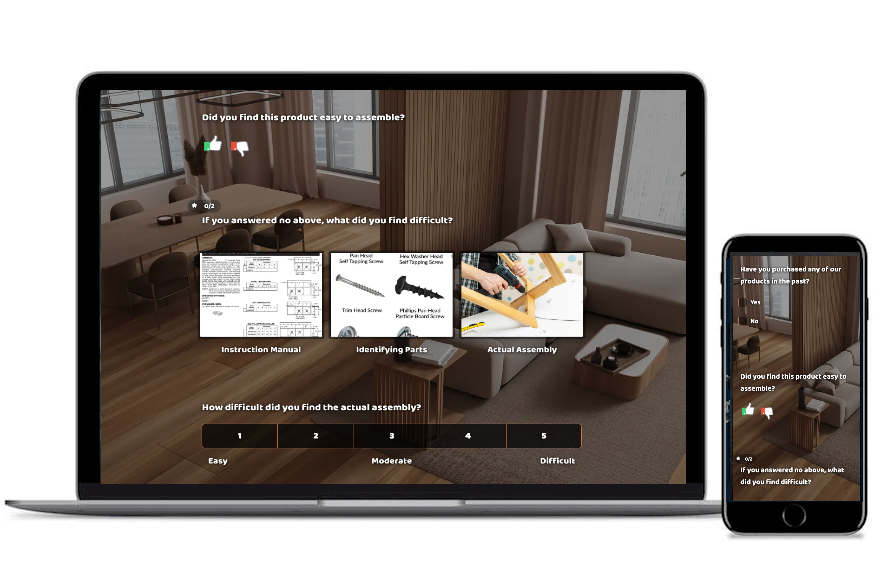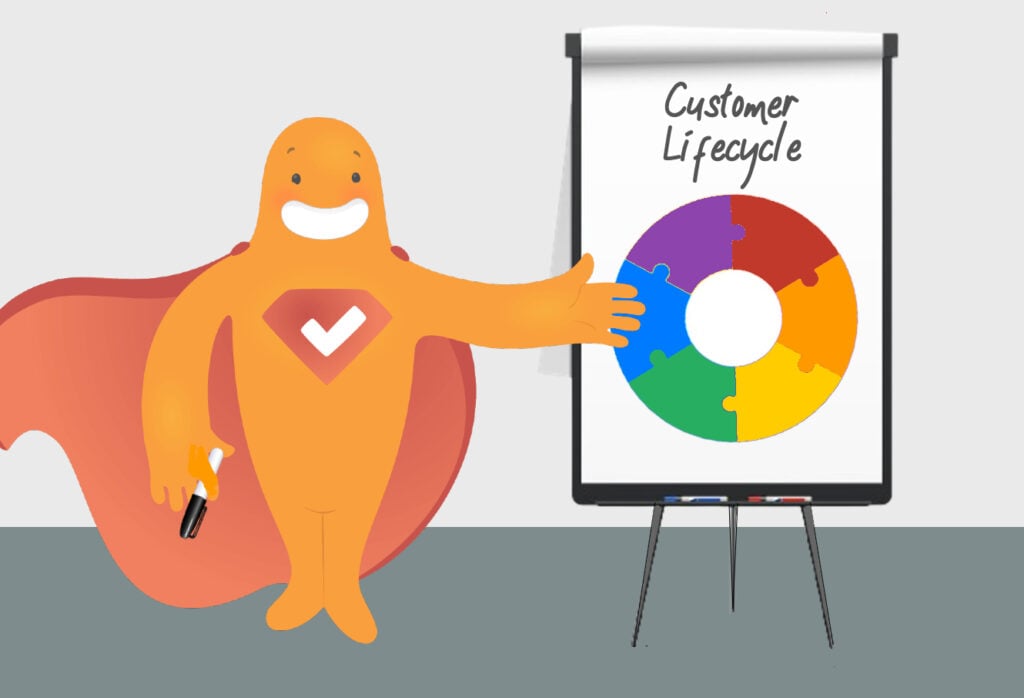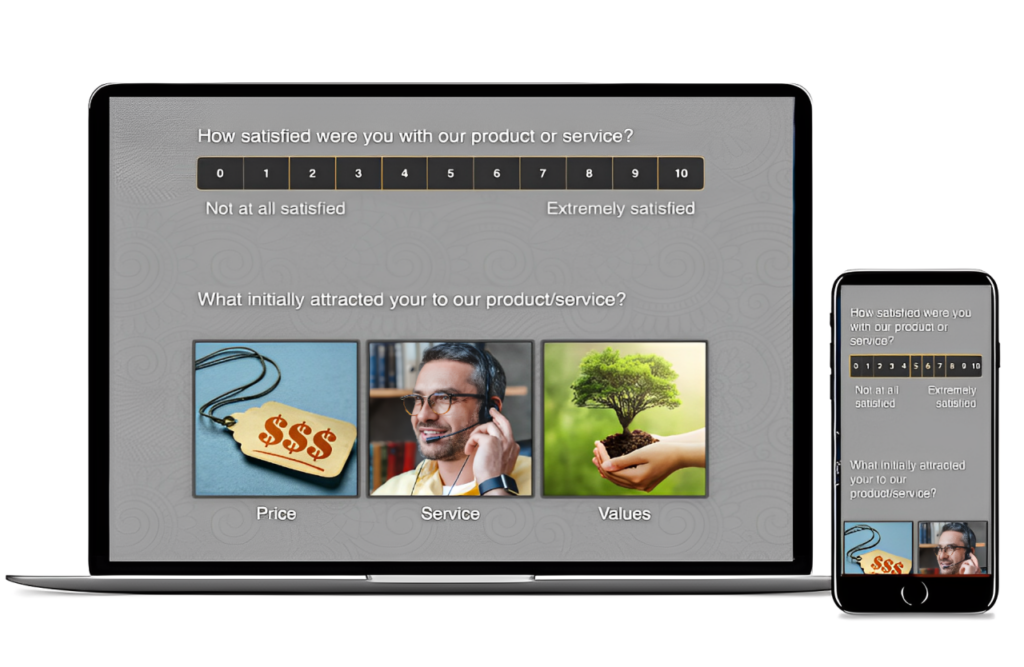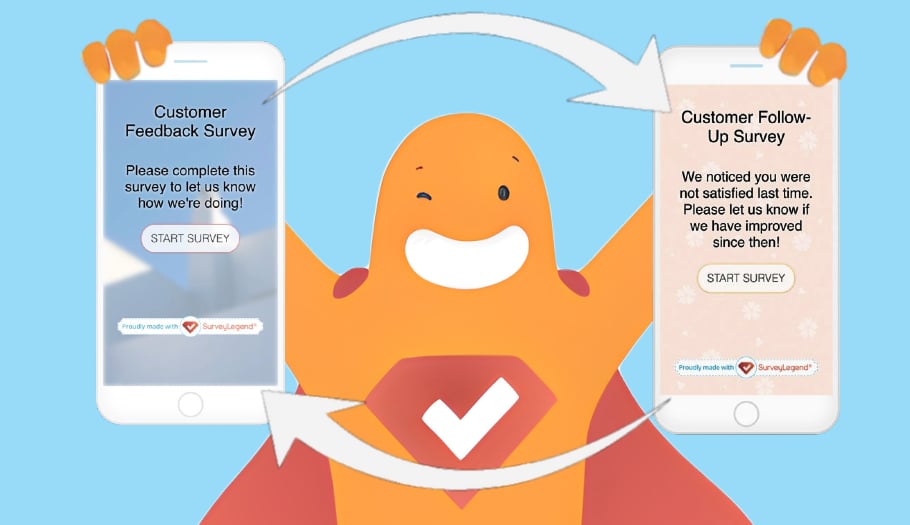“The usefulness of the cup is its emptiness.” No, this quote doesn’t come from Aristotle, Socrates, or Confucius. It’s a statement from none other than Chinese-American martial artist Bruce Lee, who was a bit of a philosopher himself. That said, it’s the type of quote that most researchers would love to get when conducting usability testing; it shows that the user perfectly understands the product! So what is usability testing, how do you conduct them, and what are its benefits? In this blog, we’ll answer these questions and more.
Create your usability testing survey, form, or poll now!
What is Usability Testing?
Usability testing helps researchers understand how easy it is for their target audience to use your product, service, or experience. It’s an important piece of user experience (UX) design and product development as it provides feedback that can lead to improvements or enhancements. With usability testing, products or services become more user-friendly, efficient, and effective.
Is Usability Testing Just for Websites?
While the term “usability testing” is fairly new, and often applied to the UX of a website, app, or other type of software, it can be applied to many types of products and services (and is, though sometimes simply referred to as “product testing” or “product evaluation”). Here’s how usability testing is applicable to various products and services.
- Hardware Devices: Smartphones, tablets, smartwatches, and other electronic gadgets can undergo usability testing to ensure user-friendly interfaces and interactions.
- Consumer Products: Physical products like kitchen appliances, home electronics, and consumer goods can be tested to ensure they meet consumer needs and expectations.
- Medical Devices and Equipment: Usability testing can be conducted among medical professionals (e.g., UX testing a new diagnostic machine they will use at a hospital) or patients (e.g., UX testing of a new prosthetic device that will be worn by an amputee).
- Automotive Interfaces: Physical products like a new safety device or virtual products like a new navigation system to be installed within may be tested.
- Retail Environments: Usability testing could be applied to the design of store layouts, signage, and checkout processes to enhance the customer shopping experience.
- Educational Materials: Researchers may look at the usability or effectiveness of educational materials, such as textbooks or e-learning platforms.
How To Conduct Usability Testing
What does the usability test look like? It will likely vary based on the product or service you want to test. For example, a new medical device that could impact people’s lives may go through many rounds of testing, only receiving approval after years or research and modification. On the other hand, a basic consumer product such as a new kitchen appliance may only go through one round of testing if the results are good. In general, most usability testing follows a precise usability testing plan. This focuses on understanding users’ behaviors, preferences, and needs and ensuring a product or service meets user expectations and goals.
1. Choosing Test Participants
Usability testing may be very broad, attempting to capture a wide range of perspectives, or very narrow, focusing on people who meet specific demographics, have had specific experiences, or have expertise in a specific area.
2. Choosing Testing Scenarios
This is when the type of usability testing is determined. The testing environment can be conducted in a controlled lab setting, remotely using online video, or in the user’s natural environment, depending on the project’s requirements and resources. The test can also be moderated or unmoderated, or a combination of the two. Three common testing methods include:
- Observation: Observers, typically UX designers or researchers, watch participants as they navigate the product and complete tasks. They take notes on participants’ actions, comments, frustrations, and successes. They may also employ various tools such as eye-tracking devices and heatmaps.
- Think-Aloud Protocol: Participants are encouraged to “think aloud” while performing tasks. This provides insights into their thought processes, decision-making, and any challenges they encounter.
- Interviews or Focus Groups: Participants are interviewed by a researcher as they interact with a product or service. This can be one-on-one or in larger groups.
- Surveys: Usability testing surveys are great for reaching large groups of people spread apart geographically. Participants may be provided with a trial product and asked to complete a survey based on their interactions with it, or surveys can be used to follow up on someone’s experience after having used a product or service.
3. Metrics and Measurements
Throughout usability testing, quantitative and qualitative data is collected, including success rates, task completion times, error rates, and participant feedback. These metrics help evaluate the product’s usability objectively.
4. Analysis and Insights
Now, how to analyze usability testing results? After testing is complete, analysts identify patterns, pain points, and areas to improve. This analysis provides insights into usability issues to address. Sometimes, a psychologist may view recordings or individuals. They may analyze non-verbal cues or body language that suggests a person is not being honest (sometimes, people may say what they ‘think’ the researcher wants to hear, which can skew results).
5. Iteration and Improvement
Usability testing is often an iterative process. While it’s possible a product or service may be a resounding success out of the gate and require no further testing, it’s unlikely. More often, based on the findings in the usability test, researchers will make recommendations to the UX designers for improving usability, redesigning interfaces, adding product features, rephrasing instructions, and so on. Sometimes, results of a usability study are so poor that the idea goes in the trash. Other times, a product slips through the process and hits the market, landing with a thud. You have to wonder, for example, when Colgate–known for toothpaste– released microwave food in the 1980s, if they really did enough usability testing.
The 5 Quality Components of Usability
At what point is it safe to assume a product or service meets consumer usability standards? The Nielsen Norman Group, a UX training company, identify five “quality components of usability.” To provide a usability testing example to highlight each five components, we’ve created a silly product: The inflatable bowling ball. We’ll apply that to each component.
Learnability: How easy is it for users to accomplish basic tasks the first time they encounter the design? The inflatable bowling ball performs well in this test, as people already have familiarity with blowing up beach balls.
Efficiency: Once users have learned the design, how quickly can they perform tasks? Our product doesn’t do well here. Because of the lightweight material, sometimes when users throw it like a traditional bowling ball, it remains stuck on their fingers. If it does come free, it doesn’t always go in the intended direction.
Memorability: When users return to the design after a period of not using it, how easily can they reestablish proficiency? The users remember how to use the product well because learnability was very easy.
Errors: How many errors do users make, how severe are these errors, and how easily can they recover from the errors? There are many non-user errors due to the ball’s lightweight design. It wouldn’t reach the end of the lane, it bounced the wrong way, and so on.
Satisfaction: How pleasant is it to use the design? Users understood how to use the inflatable bowling ball, but the experience was bad. Even if the ball made it to the end of the lane, it would never knock down a pin.
Based on this usability test, the inflatable bowling ball only passed two of the five quality components. Time for a redesign – or just scrapping the product altogether!
7 Benefits of Usability Testing
Here are several benefits of usability testing.
Identifies Usability Issues
Usability testing helps uncover problems or pain points that might not be apparent during the design phase. These issues could include confusing navigation, unclear instructions, or unanticipated user behaviors.
Enhances User Satisfaction
By addressing user concerns and preferences, usability testing leads to a more user-centric product, ultimately increasing user satisfaction and loyalty.
Reduces Development Costs
Detecting and resolving usability issues early in the development process is more cost-effective than fixing them after the product launch.
Reduces Risk of Failure
Usability testing reduces the risk of launching a product that fails, which can also damage a company’s reputation. For example, the aforementioned Colgate Dinners. Read about other product launches that failed.
Validates Design Decisions
Usability testing validates design choices and helps ensure that the product meets user needs and expectations.
Measures Progress
When using iterative usability testing, running tests over time or throughout the development process reveals whether your design is getting better over time.
Improves Product Adoption
People are more likely to embrace a user-friendly product, leading to higher adoption rates and positive word-of-mouth.
Usability Testing Questions
First, you want to ask your screening questions on your usability testing questionnaire. These may include demographic questions (what is your level of education?), criteria questions (have you been diagnosed with [x] disease?), experience questions (how long have you been a boat owner?), or expertise questions (how familiar are you with smartphone technology?). Actual testing questions could include the following:
- Were you able to complete the test?
- What stops you from completing a task?
- Which features do you find most valuable and why?
- Which features do you find least valuable and why?
- How long did it take you to complete [x] task?
- Did you find the instructions confusing?
- What are your thoughts on the design and layout?
- Which features would you use the most?
- Are there any features you would recommend?
- How frequently would you use our product or service?
- What is your overall opinion of the product or service?
- Would you recommend this product or service to others?
Usability Test Example
We created a simple usability test example for a furniture company using SurveyLegend below. You’ll see a variety of types of questions are used, which helps reduce participant survey fatigue while keeping them engaged. 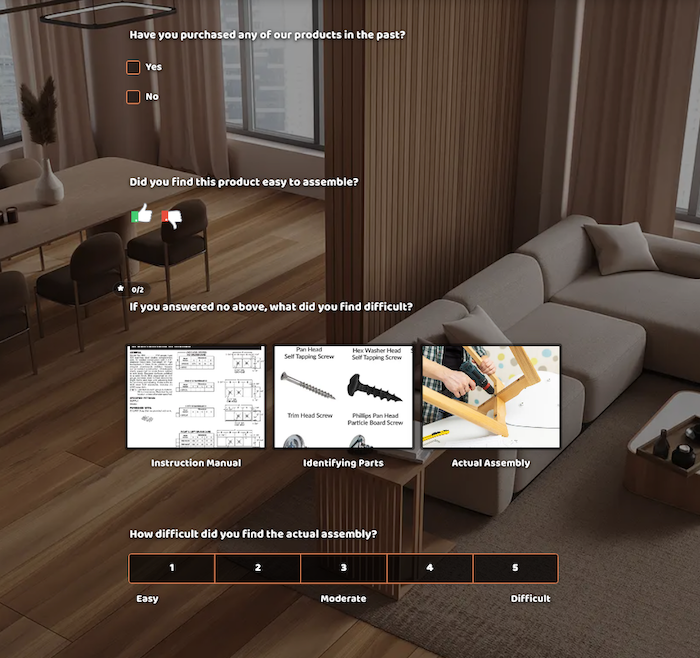
Conclusion
Usability testing is an important step in the design and development of products and services. It helps to be sure that a brand’s offerings are intuitive, efficient, and enjoyable for users. It’s an ongoing process that contributes to creating products and services that genuinely resonate with their intended audiences and result in a great user experience. Ready to create your usability testing survey? Start today with SurveyLegend!
Create your usability testing survey, form, or poll now!
Frequently Asked Questions (FAQs)
Usability testing helps researchers understand how easy it is for their target audience to use a product, service, or experience.
It’s an important piece of user experience (UX) design and product development as it provides feedback that can lead to improvements or enhancements. With usability testing, products or services become more user-friendly, efficient, and effective.
This type of survey asks people to evaluate a particular product or service. Participants are chosen based on specific criteria, such as demographics and experience or expertise. Surveys include screening questions, testing questions, and potentially post-testing questions.

